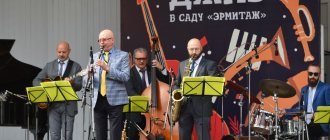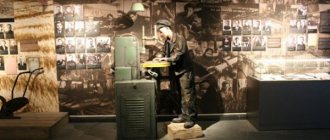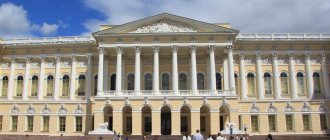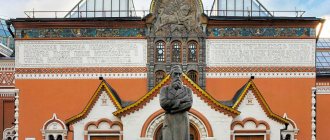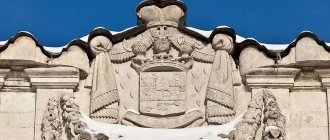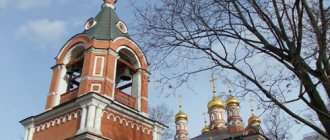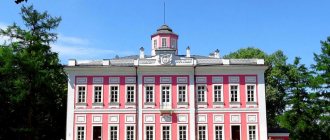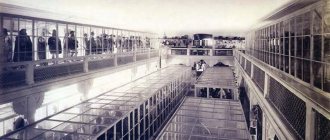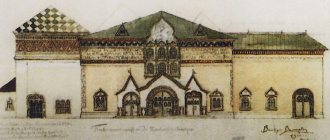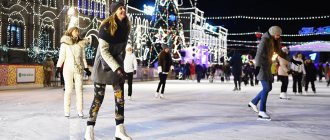Hermitage Park is the center of Moscow's summer touring and pop life, a monument of landscape gardening art, one of the first Moscow pleasure gardens, and a popular place for cultural recreation.
Among the various city parks, a special place is occupied by the Hermitage garden, founded at the end of the 19th century by the Moscow merchant, famous philanthropist and theater figure Ya.V. Shchukin. On its territory there are the Moscow Hermitage Theatre, the Moscow New Opera Theatre, the Moscow Drama Theater Sfera, and the summer symphony stage.
History of the creation of the Hermitage
The laurels of the founder of the Hermitage belong to Catherine II . She began to assemble a collection that is today considered one of the best in the world. The buildings in which today millions of people admire masterpieces of painting and sculpture were erected during the reign of the empress. Let's take a closer look at how the museum was created and developed, and how its priceless collection was replenished.
Winter Palace
The palace project created by Rastrelli was approved by Elizabeth. Construction lasted 8 years. It began under Elizabeth and continued under Peter III. In 1763, Catherine II, after her coronation in Moscow, returned to the capital to the completed Winter Palace, where she became a full-fledged mistress.
The construction of the palace, which was to become a luxurious royal residence and outshine the palaces of European monarchs, required enormous human resources and generous funding. According to Wikipedia, 4,000 people were involved in the work; craftsmen were brought from other cities. The architect had to slightly redo the original project, since Catherine II wanted the interiors to be decorated in the style of classicism.
Over time, the Winter Palace became a huge complex, which included living quarters, reception halls, two churches, a theater, a gallery, and utility rooms.
First collection
In 1764, Catherine bought the collection of I. Gotzkovsky, collected by him for the King of Prussia. Frederick II, like all European monarchs, was a connoisseur of art and had an excellent collection of works by French painters. Gotzkowski found and acquired paintings by old masters for the king.
For a number of objective reasons, Friedrich was forced to abandon the purchase. Gotskovsky, who spent considerable money on the purchase of the collection, found himself in a difficult situation. He had debts to the Russian state, and he offered to buy the paintings to pay off the debt. Catherine agreed. Not all of the 225 paintings were masterpieces. The collection included works by Flemish and Dutch painters, and several works by artists from Italy. These 225 paintings can be considered the beginning of the Hermitage collection.
How to get to the Hermitage Garden by public ground transport
The garden can be reached using ground transport. On the way to bus stop number 15, which is called “Hermitage Garden”, there are several metro stations. You should first get to Maryina Roshcha, Dostoevskaya, Kropotkinskaya, VDNKh or Novoslobodskaya.
There are also trolleybus routes leading to the famous park. The necessary stop on the 69th is the Hermitage Garden and the Theater of Miniatures. You can board this trolleybus at the Novoslobodskaya (Circle Line) or Dostoevskaya (Lyublino-Dmitrovskaya) metro stations. With the first option you will have to travel 3 stops, with the second - six.
Other trolleybuses go to the garden - B or No. 10. From the Karetny Ryad stop you will need to walk quite a bit. These routes pass along the Garden Ring.
It does not matter what type of transport is chosen. The main thing is that they will all lead to a unique holiday destination with established cultural traditions of the Moscow region. It will be of interest to absolutely all visitors in its own way.
Subscribe to our Yandex Zen channel and give it a thumbs up!
Small Hermitage
In 1764, a two-story building . The architecture of the building combined Baroque and Classicism. After 3 years, they began to build another structure on the river bank. The pavilion was intended for relaxation, there was a reception hall, several apartments and a greenhouse.
Both buildings were connected by a hanging garden with galleries. The new building was named the Small Hermitage . The northern pavilion was used for evenings, where guests were entertained with games and performances. The galleries were decorated with paintings - this is considered the beginning of the museum, known today throughout the world.
This is interesting. The translation of the word “Hermitage” is a place of solitude. This word was used to describe a room where people spent quality time with family and friends.
Bruhl Collection
The collection was replenished qualitatively and quantitatively in 1769. six hundred paintings by European masters such as Rembrandt, Rubens, Poussin and others remained All the paintings were bought for the Hermitage.
Great Hermitage
In 1771, Catherine ordered the construction of a building next to the Small Hermitage. This building was intended to house the growing collection of paintings. The three-story structure was harmoniously placed next to the existing ones. After 20 years, another building was added to the Great Hermitage and the Raphael Loggias - a copy of the gallery of the Vatican Palace.
Crozat Collection
In 1772, the Hermitage was replenished with the most valuable collection in its entire history . The Crozat gallery was purchased. The baron died two years earlier, the heirs agreed to sell the unique collection that had been collected by two generations of their ancestors. Among the masterpieces were beautiful paintings by Raphael, Titian, Rembrandt, Rubens, Van Dyck and other painters.
Sir Walpole Collection
Sir Walpole, the Prime Minister of England was a passionate collector. The paintings he collected were kept in the family castle. His heir turned to the Russian ambassador Musin-Pushkin and offered to sell the collection collected by his grandfather. , Italian painting of the 17th century came to Russia .
Hermitage Theater
The construction of the Hermitage Theater was entrusted to Quarenghi in 1783 . The building was used for theatrical performances, with a stage, boxes and benches for spectators.
Under Catherine, theatrical performances became popular entertainment. Dinners and masquerades were held here. The theater played an important role in the life of the imperial court.
How to get to the Hermitage Garden by metro
Chekhovskaya station is located on the Serpukhovsko-Timiryazevskaya line. This is perhaps the shortest route towards the garden. After leaving the metro, you will need to walk at a leisurely pace for 7-10 minutes along Karetny Row, passing Strastnoy Boulevard. But you can get to the Hermitage by metro in different ways:
- Having reached Tverskaya or Pushkinskaya, you will have to spend about the same amount of time walking. It will take longer for guests to get there from Mayakovskaya and Tsvetnoy Bulvar stations, but this is not critical.
- From Mayakovskaya the path will pass along Tverskaya Street, then you will need to turn onto Degtyarny Lane to go to Uspensky. After crossing Malaya Dmitrovka it is only a short distance to the garden.
- After leaving the Tsvetnoy Boulevard station, you need to turn left - this will be Sadovo-Samotechnaya Street. From there turn onto Bolshoi Karetny, then onto Maly Karetny. Already from this street, Likhov Lane will safely lead to the Hermitage itself.
From all nearby metro stations the distance to the park is approximately the same - about one kilometer.
After Catherine II
Alexander I and Nicholas I contributed to the development of the museum . They also expanded the exhibition by purchasing both collections and individual exhibits. The Hermitage was replenished with works by Caravaggio, Botticelli, Raphael, and Spanish painting. Russian aristocrats also replenished the collection - paintings were given as gifts or by will.
Nicholas I ordered the Hermitage to be opened to the public . Everyone, of course, could not get into the museum - firstly, entry required passes. Secondly, the pass was not cheap. In addition, visitors were allowed only in uniform or tailcoat.
Did you know? At the end of 1837, a strong fire occurred in the Winter Palace, which raged for 2 days. Only the walls remained of the palace. It took 2 years to restore the royal residence. The palace was rebuilt exactly as it was when it burned down.
New Hermitage
The building of the New Hermitage was built in 1852. In Russia, for the first time, a structure was built for a public museum. The architectural feature of the New Hermitage is the giant sculptures of Atlanteans, 10 in total. The museum houses exhibitions of the Ancient East, Egypt, antiquity and the Middle Ages. By the end of the 19th century, the museum received fifty thousand visitors annually.
Theatres, stage and garden attractions
The Hermitage Garden is open to the public 24 hours a day throughout the year. In the summer there is a cinema and stage, theaters, cafes and restaurants operate all year round.
Summer cinema
The KARO Hermitage cinema is a large inflatable open-air screen measuring 20x10 meters and 176 soft poufs for spectators. When purchasing a ticket, guests are given headphones through which sound is broadcast. This approach helps not to disturb other vacationers.
The cinema's poster includes not only new cinema releases, but also old films, as well as lectures and meetings with film critics.
The Hermitage Garden Cinema is open from 21:30 to 02:00, tickets cost 400 rubles.
Where is the stop? How to get to the stop? How to find the nearest stop? On our portal you will find answers to such questions.
Hermitage in the USSR
Oddly enough, after the revolution the Hermitage did not suffer; on the contrary, the funds were significantly replenished. Many private collections were confiscated from their owners. These valuables were distributed among different museums. The Hermitage has been replenished with rare exhibits .
After the Second World War, the museum was closed, where paintings by European artists working in new directions were kept. Its funds were distributed among other repositories. The Hermitage received impressionist paintings.
The funds were not only replenished. The museum lost some paintings; they were transferred to other galleries. Valuable paintings were transferred to the Moscow museum.
, 48 works of art were sold abroad . Among them is the only painting by Van Eyck, paintings by Raphael and Botticelli.
During the Second World War, 2,000,000 exhibits were evacuated. The museum's basements were used as shelters. The war has not yet ended, but the museum’s halls have begun to be restored. After the Second World War, all the valuables returned to their places. The museum has reopened its doors to visitors. Moreover, the funds were replenished with trophies from Berlin galleries. In 1958, the exhibits were returned to Berlin.
Hermitage today
The museum complex includes 5 buildings: the Winter Palace, the Small Hermitage, the Large Hermitage, the New Hermitage, and the theater . The collection includes almost three million exhibits. I would like to dwell in more detail on some of the exhibits and halls that are of particular interest to visitors.
Did you know? To explore the 350 halls of the Hermitage you need to walk about 20 km.
- Madonna Benoit . Early work of Leonardo da Vinci. Painters, Leonardo's contemporaries, perceived the master's work as an example of high art. The artist had students and followers. Benois is the surname of the painting’s former owners. Leonardo's work came to the museum in 1914.
- Madonna Litta . The canvas was purchased in the 19th century from the Litta family from Italy. The author of the painting is called Leonardo da Vinci, although some experts doubt this.
- Peacock watch . The incredibly designed chronometer was purchased by Potemkin as a gift to the Empress. Over the course of two centuries, the clock was repaired twice. Today the clock is working properly.
- Danae . The painting has been in Russia since 1772. A beautiful painting by Rembrandt was damaged by a vandal who poured sulfuric acid on the painting. The fourth part of the painting was damaged, but it was completely restored. By the way, the Hermitage houses 24 paintings by Rembrandt. This is the largest collection of the artist outside his homeland.
- Lady in blue . Gainsborough's only work in Russia. The painting came to the Hermitage in 1912. This work is called the best portrait of the Baroque era.
- Madonna and Child . Raphael's work was painted around 1504; Alexander II purchased the painting for 310,000 francs as a gift to his wife. As soon as the canvas arrived in Russia, it was immediately exhibited in the Hermitage.
- Return of the Prodigal Son . The painting by Rembrandt was bought by Catherine in 1766. The story of the prodigal son interested the artist for many years. 20 years before the creation of the painting, Rembrandt made drawings on this topic.
- Cupid and Psyche . The work of the famous Italian sculptor A. Canova. Thanks to his talent, Canova received the title of Marquis from the Pope. Cupid and Psyche are heroes of ancient myth. The beautiful figures of the heroes, the lightness and grace of gestures surprise everyone who sees this sculptural composition.
- Crouching boy . No matter how many masterpieces there are in the museum, Michelangelo’s works will always be the “pearl” of any collection. This sculpture was no exception, especially since there are no other works by the great Italian master in Russia.
This is interesting. In the Egyptian Hall, under a glass case, the mummy of a priest is kept. The museum says that in 2004, a muscle on the mummy's shoulder began to twitch. After 2 days, a growth appeared there, the size of a walnut. The growth moved along the arm. The strange phenomenon lasted for a week and then stopped. It is unclear whether this is true or not. But they tell it convincingly.
Halls of the Hermitage
In one visit you will not be able to get acquainted with the huge museum complex, which contains more than 350 rooms . Before the excursion, you should familiarize yourself with the exhibitions and choose those that are most interesting.
Pavilion Hall
This room has a luxurious and elegant interior. The design was carried out by the architect A. Stackenschneider in the 19th century. Several styles were used to decorate the hall - antique, oriental and renaissance. The room with columns, arches, and huge crystal chandeliers resembles the palace of an eastern ruler . There are no sculptures or paintings in the pavilion hall, but it is a work of art in itself.
Each element of the hall is interesting and unique. Fountains, medallions, flooring decor, tabletops with mosaics - everything is done so skillfully that it will take your breath away. It is in this room that you can see the Peacock clock.
This is interesting. Nicholas II was a car collector. The first car appeared in 1905, and in 1911 there were more than 40 of them, of different brands. A garage with everything necessary was equipped near the Winter Palace. After the revolution, the collection disappeared without a trace.
Loggias of Raphael
The loggias are a separate gallery of 13 buildings . The loggias were built under Catherine II, who wanted to have a room like the one in the Vatican. The paintings were copied from Vatican frescoes.
Armorial Hall
The spacious hall with columns was intended for holding special events. Here is a collection of silver made in the 18th century by French craftsmen. The exhibition includes a service that belonged to Elizabeth.
Alexander Hall
The spacious room with high arches is a bit like the interior of a temple. a portrait of the emperor in the hall . The exhibition housed here includes medallions with images of the main stages of the war with Napoleon. In addition, the hall features an exhibition of silver.
Malachite living room
The hall was decorated by Alexander Bryullov in 1837. The main design elements are malachite columns , pilasters and two fireplaces. Vases, table tops and some other interior items are made from malachite. The most valuable exhibits are a malachite flowerpot and antique furniture.
Golden living room
The ceiling, floor and walls of the hall are decorated in gold. The ceiling is decorated with patterned carvings. There is an exhibition of jewelry .
White Hall
To create this hall, three halls had to be combined . The hall is really white, the floor and chandeliers are of different colors. Columns are installed along the walls and they are crowned with statues. The hall is decorated in the Empire style. Here you can get acquainted with several exhibitions - French painting, a collection of porcelain, antique furniture. According to reviews from tourists, it is an unusually beautiful hall.
Knights' Hall
The exposition of this hall is a must-see for weapon lovers. Among the 15,000 exhibits are armor, bladed weapons and firearms and much more. Of particular interest to visitors are the figures in knightly armor on horseback. The figures are made in full height. The walls of the hall are decorated with paintings depicting battle scenes.
Entertainment and relaxation
An integral part of the Hermitage Park is the Shchukin stage or “Pike”. Included in the list of cultural heritage sites. After fires in 2008 and 2011. Experts conduct inspections of the monument with one goal - to prepare an opinion on the possibility of restoring the premises.
The open summer stage of the Hermitage Garden is a legendary place where, since its foundation and to this day, concerts on City Day, performances by stars, various holidays and major presentations have been held.
To the delight of children and adults, the Hermitage Garden has small enclosures in which squirrels, pigeons and pheasants live.
Also located on the territory of the Hermitage Garden are a Children's Playground, a Children's Club, and the First Children's Media Laboratory, which has a children's and ballet studio, an art studio and a dance studio.
In winter, there is an artificial ice skating rink on site. Thanks to the artificial surface, the skating rink operates in any weather, even during winter thaws. Visitors can change clothes and rent skates in the heated pavilion, and have a hot snack directly at the skating rink.
In addition, the Hermitage has many secluded places where you can have a wonderful time, relax with your children, family, loved ones, friends from the daily bustle of the city, or invite your loved one on a date.
Cats of the Hermitage
60 cats perform “service” in the Hermitage . Their predecessors appeared at court in 1745 by personal decree of Elizabeth Petrovna. Catherine's palace was larger, so the number of mouse hunters was increased. There were yard and indoor cats. The former hunted in the yard, the latter protected the interior.
Museum cats feel great, and sometimes behave even brazenly. During the work of the museum there were different situations. Cats were driven from the imperial throne, and a particularly arrogant cat, Muska, spoiled an important document for the director of the museum. There was a period in the 60s when cats were removed from the Hermitage. Instead of cats, rats appeared in large numbers. I had to bring in cats again.
The cats have their own room in the basement, where there are bowls, bedding and trays. The veterinarian monitors the health of animals, gives vaccinations and sterilization. Once a year, museum staff organize Hermitage Cat Day . On this day, everyone can see the cats’ habitat.
Ticket prices
- Full – 400 rub.
- Pensioners and students – free.
- Non-Russian citizens – 700 rubles.
Every month, on the third Thursday, everyone can visit the museum for free.
Amateur photography is permitted.
The Hermitage is the pride of Russia . Not every country can boast of such museums. Five million tourists visit this amazing temple of art every year. Everything is interesting here - exhibits, interiors, history. A trip to St. Petersburg will be more interesting and eventful if the excursion program includes a visit to the Hermitage.
Cultural and historical significance
The State Hermitage is an undeniable cultural pride and value not only of St. Petersburg and Russia, but of the whole world. The museum houses world-class masterpieces and relics, as well as various cultural elements of different countries and eras. All of them are connected together and collected together in the State Hermitage Museum in St. Petersburg.
The Hermitage preserves the heritage of all humanity, because in various halls both traces of the peoples of Altai of the 6th century and works of artists of the 20th centuries are presented. In order to immerse yourself in the history of different countries and their culture, you need to visit the museum in person.
As a tourist in St. Petersburg, you have a great chance to gain knowledge in history, sculpture and painting, as well as simply admire the amazing architectural compositions.
© Igor Butyrskii
